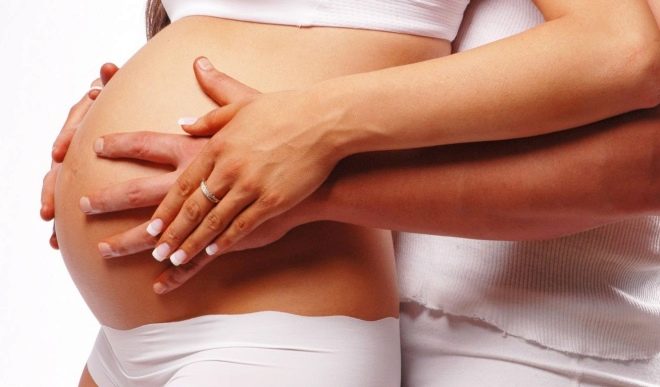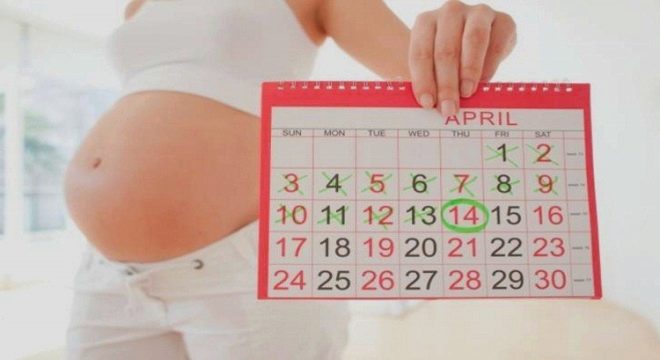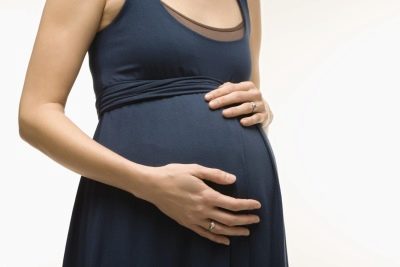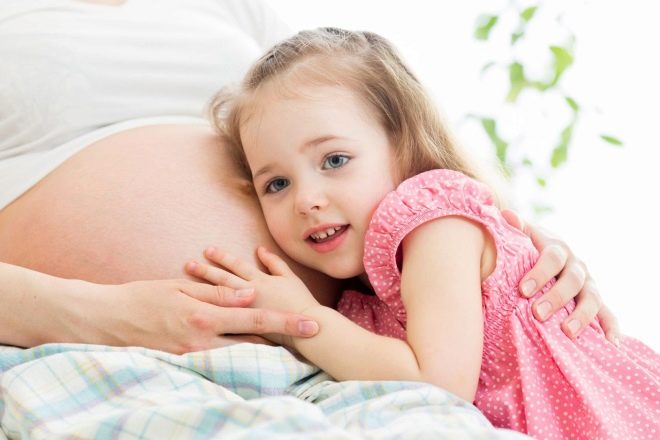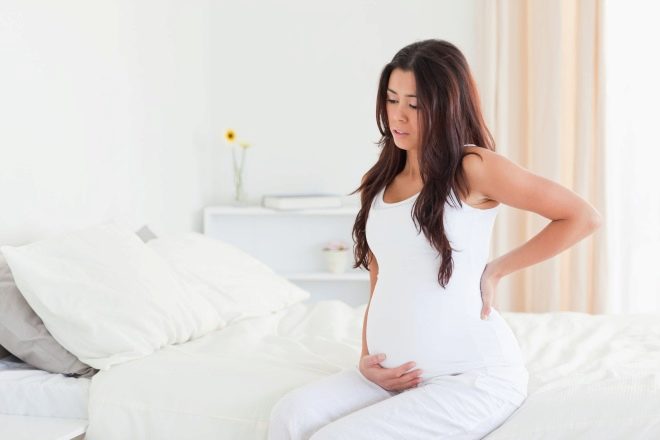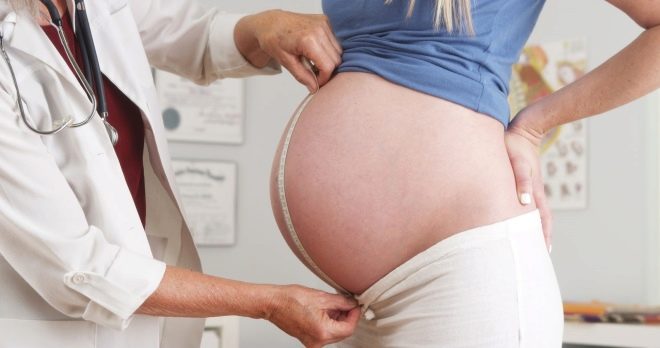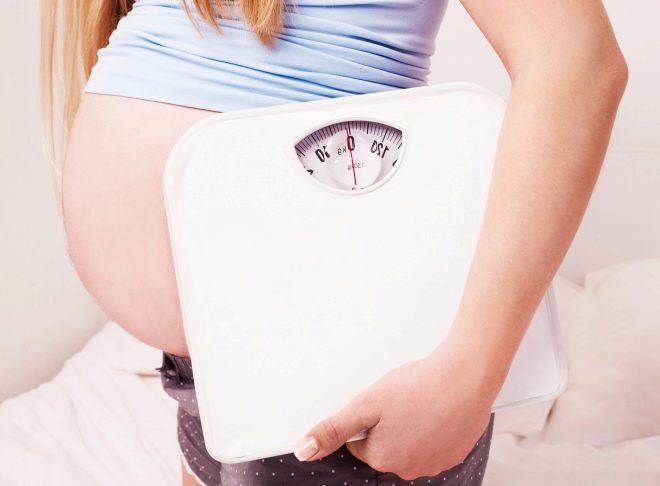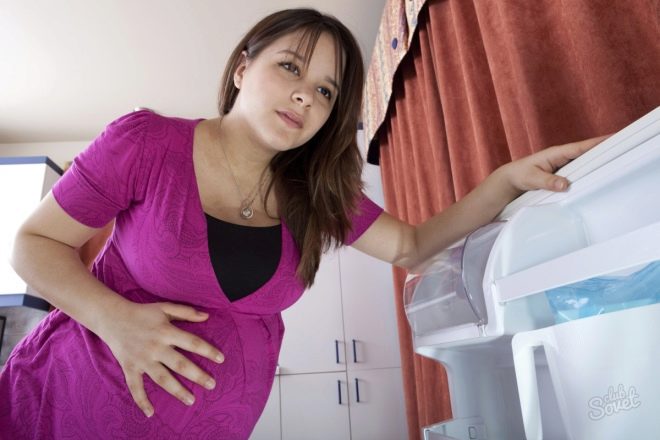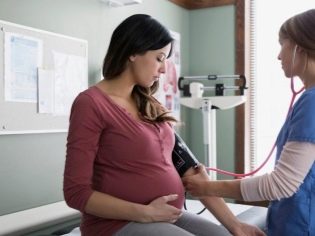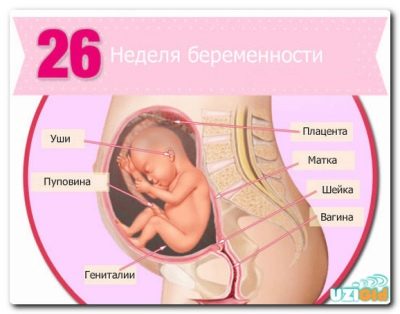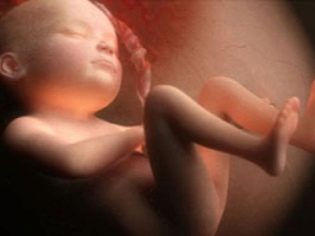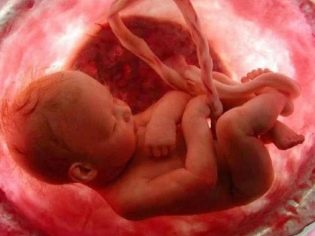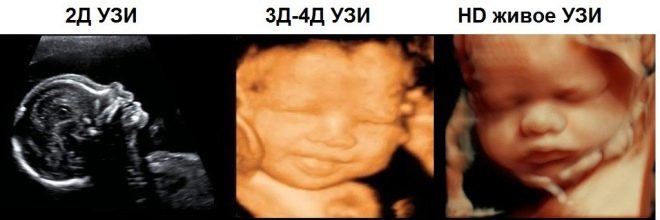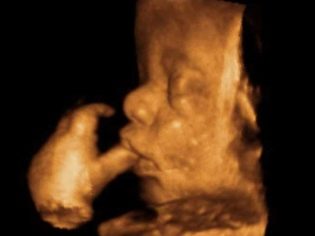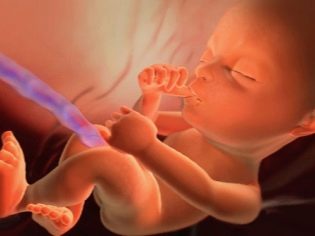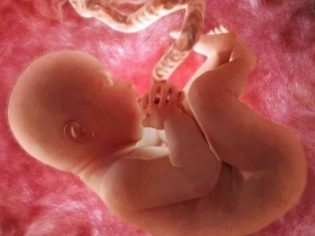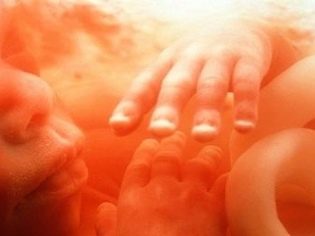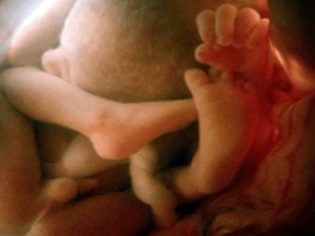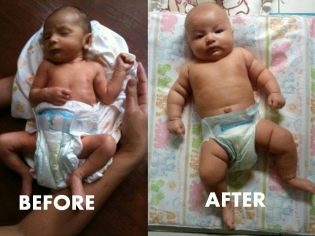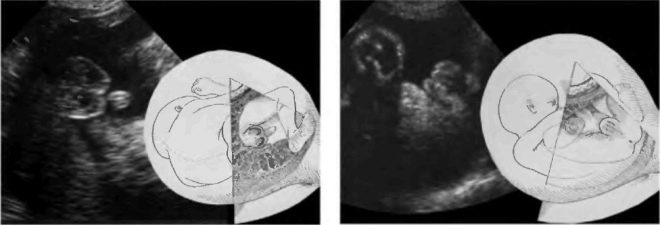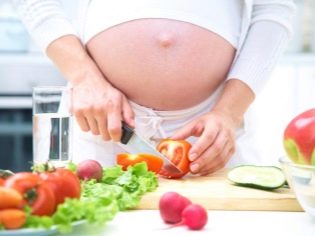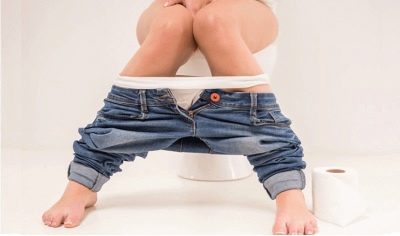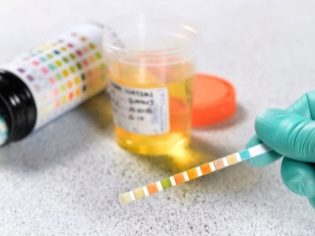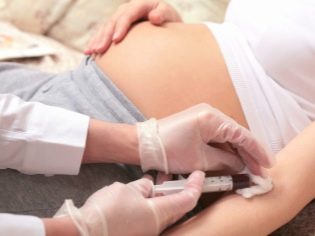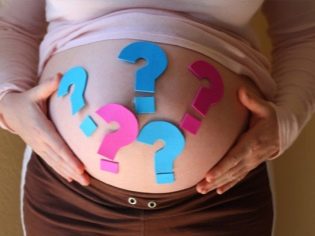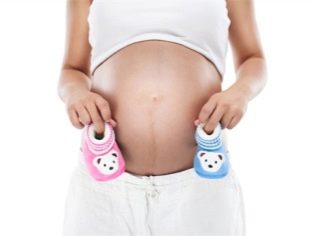26 week of pregnancy: what happens to the fetus and the expectant mother?
The 26th week of pregnancy completes the second trimester, which means that the cloudless period ends, and the woman enters the home stretch. The state of health of the pregnant woman is changing rapidly, as her baby is changing. About what is happening at this time, we will describe in more detail.
How many months is it
Week 26 - the last in the second trimester. After six days, the last third of the baby's term will begin. It is the seventh obstetric month. Obstetricians measure gestational age in lunar months, each of which has exactly four weeks. Now, by their standards, a woman has 6.5 obstetric months. This is about 6 months on a regular calendar.
24 weeks passed from conception, and 22 weeks from the delay of menstruation. Approximately 14 weeks remain until the expected date of birth. More than half of the long and interesting journey left behind.
Ahead is a rather difficult stage. At the beginning of week 26, a woman goes to a “new level” - now all her thoughts are occupied only with the upcoming birth and the baby.
Feelings of a woman
Changes literally "hover in the air." The future mother changes outwardly, her mood and well-being change dramatically. Already at 26 weeks, many stop working, taking advantage of another vacation. The law allows you to take regular leave before maternity leave. The decree is supposed to go on week 30, if a woman bears twins, she is given a sick leave at week 28. If you add up another vacation and all the accumulated time off, then now you can say goodbye to your colleagues and transfer the case and position to the successor.
It is becoming harder and harder for the expectant mother to fulfill her job duties, sit in the workplace, do household chores. Now she needs help and rest. The pleasant euphoria, which lasted for almost the entire second trimester, is gradually giving way to fatigue and increased fatigue.
Stomach
The belly has grown significantly, and many women at 25-26 weeks of pregnancy notice that it has become difficult for them to put on their own shoes, especially if it is winter in the yard, and boots or shoes need to be laced or zipped up. It becomes more and more difficult to bend, the stomach interferes, it is also difficult to sit on shoes, because it has become difficult to raise legs to the level of arms.
Many pregnant women no longer see their legs when walking; almost no one can see where the woman is going. This creates a very real threat of loss of balance, falling, injury, especially in winter.
The tummy grows by leaps and bounds. Already, not only does a woman feel the movement of her baby, they are well visible to everyone around her: during periods of activity, the belly literally walks under clothing. It is no longer possible to hide a tum, even spacious clothing does not hide an “interesting position”.
Stirrings
The baby at week 26 is actively gaining weight, it is becoming more and more crowded in the uterus, and therefore at week 26, movements can begin to hurt a woman. The thinner the expectant mother is, the stronger she feels the movements of the crumbs.
Women who are carrying twins, at this time, are already experiencing real suffering from shocks and kicks to a variety of internal organs.
The movements have become regular. The future mother has already “studied” the rhythm of the life of the child and its regime. She knows exactly when the baby is sleeping, and when she is awake, when the pussy hiccups, and when she is worried. The existing methods of counting perturbations have no practical use. They are usually applied from the 28th week of pregnancy. In the meantime, the expectant mother should simply record the presence or absence of motor activity of the fetus.
Too active and prolonged movements (for several hours without rest) can be a sign that the baby has transmitted its own umbilical cord with its body or has been entwined, and now it suffers from a lack of oxygen.
Fading often indicates that the baby is sleeping, but if during the day it does not make itself felt, you should also consult a doctor.
Now the activity of the puzozhitel is at its peak. This will continue until approximately 32 weeks, then there will be little space in the uterus, the baby will grow, and active movements will be difficult for him. Already, the kids hardly turn over.
At 26 weeks, women often pay attention to the fact that the activity of the baby is associated not only with his personal daily routine, but also with external factors, such as the weather outside the window. On rainy days and in extreme heat, babies try to sleep more.
Also, the activity depends on many other factors - on the mother's food, her mood. If a woman has stress, the specific hormones that are produced by her during this period are transmitted to the baby and act in a similar way on his body. Stirring becomes more rare.
But from the mother eaten chocolate and joyful events in her life kids are activated. This invisible emotional connection will be maintained in the first months after the birth of the baby.
At night, at obstetric week, most babies do “dancing” to their mother, and therefore it becomes difficult for a woman to sleep and fully relax. In the afternoon, when the woman is in an upright position, she walks, does something, the baby is “rocked”, and he moves less intensively.
In addition, even now the crumb with might and main “shows character”: some babies push and kick often, and others doze more. After the birth, the temperament will remain: some children will be calm, and others - inquisitive adventurers from literally from the first days of their life.
Psychological condition and mood
The woman’s well-being is no longer as light and relaxed as it used to be, and this can not but affect her mood. A quick maternity leave evokes mixed feelings.
On the one hand, the woman is pleased and glad that soon she will be able to rest as much as she wants, and there will be no need to get up in the morning. On the other hand, there are doubts and worries about whether they will keep her job, whether she will have a place to leave the decree, because finding a new job, in which case, holding a small child is not so easy.
By law, to dismiss a woman who is on maternity leave, her employer has no right to reduce. The exceptions are cases of complete liquidation of the enterprise, but even in this case the woman will not remain without means of livelihood, she will be paid compensation provided for by law.
Therefore, worry and worry not worth it. It is better to focus on meeting your baby soon.
However, the fact of the upcoming delivery at this time begins to frighten women. Moreover, childbirth is terrifying not only for those who face it for the first time. Sometimes, during the second or even third pregnancy, anxiety and fear are stronger, because the woman already has a clear idea of how the labor goes and what kind of complications and unforeseen situations can arise in them.
Most pregnant women at obstetric week 26 admit that they feel uncomfortable with being dependent on others. Now a woman needs help to tie shoes, go to the grocery store, hang out the washed clothes, etc. Everything that she had successfully coped with herself before, now without any help becomes very difficult.
Because of this, the possibility of developing neurosis and depression of pregnant women increases. That is how psychologists and psychotherapists call emotional disturbances during childbearing. If a pregnant woman has no one to share her fears with, if you cannot pull yourself together, tune in again to a positive wave, you should contact a female psychologist, who accepts free of charge in consultations in the community.
Such specialists have quite a lot of experience working with a contingent of pregnant women, there are individual methods and techniques that will allow to sort out the situation, give practical advice and recommendations, because peace now a future mother needs nothing less than vitamins and good nutrition.
Pain sensations
Despite the fact that until the birth remains about 3 months, the body of the expectant mother begins large-scale preparatory "activities" for this difficult test. The production of the hormone relaxin begins, under the action of which the bones of the pelvis become softer and more pliable. Many pregnant women feel that they have a pain in the pubic bone.
If this pain is not of a sharp and sharp nature, does not limit movements and the ability to move, sit, walk on the stairs, then there is no reason for alarm. In case of acute pain, an obstetrician-gynecologist and an orthopedist should be visited to exclude symphysitis.
Under the influence of increased weight, women ache and ache the legs, especially the knee joints and ankles. Convulsions in the calf muscles, especially at night, are not excluded. Such painful contractions are symptoms of a lack of calcium in the body, because the baby has already taken a lot of this mineral, and its need for calcium has not yet dried up.
The back on this period hurts and aches at once for two reasons: the center of gravity has shifted due to the grown abdomen, and the back muscles experience increased load due to the need to keep the upper body in a vertical position with the breast grown a couple sizes.
The growth of the uterus continues, the ligaments stretch and thicken, the task of which is to keep the reproductive female organ in the correct position. This is accompanied by tingling in the uterus and on the sides of it, the loin occasionally hurts in the woman. The waist pulls not only because of the stretching of the ligament apparatus, but also because of the weight load.
Physiological pain does not require treatment, taking painkillers, physiotherapy. To distinguish them from the pathological is quite simple.
Natural pains in this period are not accompanied by abnormal secretions from the genitals, the pain does not increase, does not resemble in nature contractions, the uterus does not come in tone. If you relax a bit, lie down, soak in a warm shower, then they subside.
Allotment
Discharge from the genitals from the 26th week of gestation needs careful monitoring. In order not to miss the pathological changes, it is worth using daily thin sanitary pads.
Tampons can not be used, because they increase the likelihood of stagnation inside the vagina, which contribute to the reproduction of pathogenic bacteria, the danger from the point of view of introducing infection is the very process of introducing a tampon into the genital tract.
Discharges at week 26 is getting bigger. If the pregnancy proceeds normally, then the vaginal secretion has a white, beige or yellowish color, a uniform consistency, without impurities of blood, mucus, or clots. The smell may not be at all, and there may be a slight smell of sour milk. Such secretions are considered completely normal.
Other colors that have an unpleasant odor, a strange texture, as well as causing unpleasant sensations such as itching, burning, may indicate a deviation from the norms. These pathological secretions include greenish and gray discharge characteristic of bacterial and purulent infections, white cheesy discharge, which may be a sign of thrush, as well as blood and watery discharge.
Pink and brown discharge also belong to the blood and differ from each other only in the number of red blood cells in the vaginal discharge. If the discharge is similar to water, they are abundant or are excreted in small amounts, but regularly, this may indicate the discharge of water or its leakage.
In all cases of deviations in the nature of the discharge from the norm, you should go to the doctor, and if the water has departed, it is best to immediately call an Ambulance.
At week 26, a woman should be washed with warm water without soap, two or three times a day, to prevent infection of the genital tract. Abundant secretions - fertile environment for the reproduction of bacteria and fungi. Requirements in compliance with the rules of intimate hygiene grow several times.
Changes in the body
Changes at the physical level this week are becoming more noticeable. Most pregnant women have increased pigmentation. Moles, freckles (if they were before pregnancy) became brighter, and mugs around nipples were darkened.
The chest itself hurts significantly less than before, or does not bother a woman at all. Colostrum can be released from the nipples - this is also normal.
Often women at 26 weeks notice that their fingers are numb, there is tingling in the limbs. All this is a consequence of large and important processes that are now taking place in the female body.
Uterus growth
The uterus continues to grow with the baby. At 26 weeks, she is in the abdominal cavity, her bottom rises 6 centimeters above the navel. The navel itself has stopped hanging around, but now there are more tangible problems. The uterus "props up" the diaphragm, the woman begins to experience difficulty in breathing, shortness of breath appears, it is almost impossible to take a quiet deep breath.
Nausea, heartburn come back. This time they are not related to hormonal adjustment, as was the case in the first trimester. Now only a large and heavy uterus, which squeezes the stomach, the gallbladder, is to blame for the disturbance of digestion.
Suppressed intestinal loops can not provide a normal stool, so at the current time diarrhea, constipation, and increased gas formation are not excluded. The uterus rises on average per centimeter per week. The height of standing of the uterus at week 26 is 24-28 centimeters. The length of the cervix - 35-45 mm.
The body of the uterus by the end of the second trimester has reached an impressive size - 24-28 centimeters in height and 15 -17 centimeters in width. The shortening of the cervix at this stage is the main cause of preterm labor.
The cervix usually becomes shorter and smoothes before delivery. This period is not considered normal for such a process. A short neck needs retention therapy. Obstetric pessary, previously stitched on the neck, fixing it and not allowing it to open ahead of time, are the main ways to prolong the pregnancy in case of neck failure.
A woman feels the uterus well not only while sitting or turning from side to side. Now the location of the uterus is easily determined and without the help of a doctor, the upper limit of the reproductive organ almost props up the lower part of the mammary glands.
Now, more than ever, the need for load relief is increasing. A special orthopedic antenatal bandage will help this woman.
Weight gain
Weight continues to arrive quite intensively. There is nothing strange in this, because by the 26th week the volume of amniotic fluid is about 700 ml, the placenta weighs about 300 grams, the baby weighs almost a kilogram, and about half a kilo is the womb.If we add to this our own fat reserves and the increased amount of blood circulating in the female body, we get a rather impressive number.
Weight gain is considered normal if the expectant mother now adds no more than 400-500 grams per week. However, the general “weight gain” is a rather individual matter.
- Slim women are normal should add to this week no more than 9 kilograms plus their original weight.
- Women with a normal weight should gain no more than 8 kilograms.
- Future mothers who before pregnancy were "donuts" - no more than 5-5.5 kilograms.
For weight now you need to follow very closely, weighing in weekly and writing the results in a special notebook.
Unmotivated weight gain during this period, while observing the principles of healthy eating and an active lifestyle, may be the only symptom of a dangerous pregnancy complication - gestosis.
Training bouts
The so-called training bouts this week are observed in about 30% of women. And most of them - primiparous. In a second or third pregnancy, training contractions usually begin just before delivery, within a few days, or even hours. But there are exceptions.
By themselves, training contractions should not frighten a pregnant woman, because they have no effect on the child and the health of the woman, and do not lead to smoothing and opening of the cervix. Despite the fears of women, false contractions do not bring childbirth closer, with or without them (after all, not a single false contraction occurs in some of the entire pregnancy) deliveries will begin at the appropriate time.
It is not difficult to determine the tone of the uterus in this period; all women in the "position" are fluent in this. Training fights appear that way. For a few minutes, the uterus becomes stone, the stomach tenses, after which everything passes without a trace. Such contractions are not repeated regularly, at week 26 they can “visit” a pregnant woman every few days.
If a woman lies down at the time of the fight, changes her body position, relaxes, or visits the shower room, the unpleasant and frightening feeling will recede.
True contractions are difficult to confuse with false ones. If preterm labor has begun, the contractile activity of the uterus will proceed according to the same principles as in the case of a full-term pregnancy: contractions will be repeated at regular intervals, intensifying. Remove them with a warm shower will not work.
Arterial pressure
At the 26th week of pregnancy, blood pressure finally returns to its origins, to the level that was customary for a woman, which she had before pregnancy. If during the second trimester the blood pressure was somewhat lowered, then by the end of this period it would increase in all expectant mothers, thus leveling up to “non-pregnant” values.
This means that a healthy woman begins to suffer less headaches, is less likely to feel dizzy, and the probability of losing consciousness is significantly reduced. However, in women with overweight, multiple pregnancies and women prone to hypertension (elevated blood pressure), it is now that a headache can begin to hurt. If there is preeclampsia, its course can be aggravated.
From week 26, special attention should be paid to the level of blood pressure.. It is measured on two hands in the morning and in the evening, in case of an increase in the values, it is imperative to consult a doctor, not postponing it for later, because high pressure is dangerous for the placenta and the baby.
If your head hurts regularly, you also need to consult a doctor: perhaps the reason lies not in the level of blood pressure.
Decreased visual acuity
Many expectant mothers in the middle of the seventh obstetric month notice that they have slightly decreased visual acuity.Such changes are caused by fluid retention in the body, sometimes eyelid edema, increased stress on all vessels, including intraocular ones, as well as the so-called “dry eye syndrome”.
If a woman had vision problems before the pregnancy, right now she needs to see an oculist. If there were no such problems, you can not worry: the decrease in vision is temporary, after birth, the visual function will be fully restored.
Baby development
Most babies at week 26 take the correct position in the uterus - the head, that is, they are located head down to the exit of the uterus. In this position, they are to be born, although some very mobile kids still manage to change their body position.
If now the crumb is in pelvic or transverse presentation, do not panic ahead of time and tune in to the inevitable caesarean section. The position of the fetus in order to select the mode of delivery is usually determined much later. While the baby has time to change its position.
Now the baby is becoming more and more like a little man, he is actively gaining weight. At 26 weeks, he weighs from 750 grams to a kilogram. His height - 33-35,5 centimeters. From the crown to the coccyx (KTR), the growth is about 29 centimeters.
Appearance
The appearance of the baby at this time is already very individual. In it, many features are inherent only to him, it is this kid and no one else. The embryos resemble each other like two drops of water, but after the embryonic period, enough time passed for the baby to show features that he “inherited” from his mom and dad.
Now the kids have different sizes of the nose, different cilia, the shape of the lips and the height of the forehead differ. And only the auricles are all a bit similar in that they are slightly bulged.
The ears are made of cartilage, it is still quite soft. As soon as the shells harden, they will assume a more natural position in relation to the head. By the way Doctors judge the degree of prematurity of the baby, if it is born much earlier than the time, by the degree of softness of the ears.
The skin began to smooth out due to the appearance of subcutaneous fatty tissue, but not all the wrinkles have disappeared yet, and the baby, if you look at it in 3D or 4D formats on ultrasound, looks very much like a little old man. As the wrinkles smooth out, this similarity will gradually disappear.
Jaws baby well developed. Earlier, the beginnings of milk teeth were laid, now the root, permanent teeth are being laid in full swing. Prior to the period of loss of milk teeth, they will be in the depth of the jaw tissue.
The child begins to develop his own skin pigment, now he is no longer a red-violet tadpole, but a well-formed little man with skin similar to his usual color, although more subtle than it seems. There are nails on the fingers, fingerprints are determined by fingerprints - unique unique patterns on the skin.
Original grease shows the body and face of the baby. It protects the skin from water exposure. Grease does not wash off hair, which is called "lanugo". These thin hairs all over the body are the result of the work of hair follicles, and gradually the baby has already begun to get rid of them.
The proportions of the baby's body have become more correct. The head is no longer the largest part of the body, but the legs, which were short, have now grown longer than the handles.
The tummy began to improve, small cute cheeks appeared, the arms and legs no longer make a piteous impression with their thinness.
Nervous system and sense organs
At week 26, the baby in the womb is not boring. He is actively developing his senses, which allows your little one to explore the world with interest in the framework in which it is now possible. The eyes of a child open and close. He sees in color, but the clarity of the image leaves much to be desired.Everything seen is perceived by the crumb as multi-colored blurry spots.
The organs of hearing are functioning fully, now the baby listens carefully. Favorite sound - mother's heartbeat, he calms him down. After giving birth to this light, the baby will also react to the sound of his mother's heart, which is why infants, if they are sick or naughty, are recommended to apply more often to the chest, to press to themselves. A crumb will hear a familiar sound and calm down.
Now the formation of receptors responsible for the sense of smell continues. Tactile sensations are already familiar to the child, he “uses” the touch and quite successfully, feeling everything that surrounds him and himself. Also, the baby on this period is a real gourmet, he distinguishes shades of flavors of amniotic fluid, as he has taste buds located on the inner surface of the cheeks and on the tongue.
The cerebral cortex continues to evolve. Thanks to the development of neurons, thousands of new neural connections are formed in each, the baby learns new movements and skills.
Despite the fact that the formation of the nervous system is the longest, the baby has already achieved a lot: he can suck, grab, spit, swallow. He has a more active right or left pen, and now one can understand whether he is left-handed or right-handed.
The baby squeezes the cams, reacts to stimuli, both sound and tactile, he sleeps and is awake, and during sleep, which in the 26th week takes him up to 22 hours a day, your child sees the most real dreams. It was possible to figure out this by fixing the phases of fast and slow sleep in fruits at the end of the second trimester. The phase of REM sleep, in which dreams usually happen, prevails in babies.
At week 26, the brain not only takes control of limbs and other parts of the body, but also makes important contact with the adrenal cortex. Now the baby begins to form its own hormonal background.
Internal organs
The main processes this week are in the lungs of the baby. They continue the formation of alveoli and the production of surfactant, which started just a few days ago. The lungs themselves now occupy the correct position in the chest - “triangle” with the top upwards. Maturation of lung tissue is a very important stage.
Alveoli resemble bubbles. Here they are filled with air and take part in gas exchange. And the babies in the mother's womb, while they do not have independent full breathing, the vesicles-alveoli are empty. So that after the first inhalation and exit they are not "blown away" and not "stuck together" back, a surfactant is necessary - a substance that is produced by the alveoli themselves. If the baby is in a hurry with birth, surfactant may not be enough, which is fraught with acute respiratory failure.
The digestive organs of the baby, the endocrine glands work almost in full normal mode. The kidneys produce urine, the first feces are deposited in the intestines - meconium, which consists of particles of peeling epithelium, lanugo, which fell into the water and were swallowed by the baby.
The heart of the baby knocks rhythmically and clearly. The future father can now hear him, if he “listens” to his wife’s tummy with a stethoscope. The baby's heartbeat is about two times more frequent than his mother's heartbeat. This week, the normal heart rate is 140-170 beats per minute.
Ends the formation of the reproductive system in boys. The girls completed this process earlier. Most of the future representatives of the stronger sex this week, the testicles, which have come a long way from the abdominal cavity, descend into the scrotum. For the rest of the boys, this happens at a later date. Only a small percentage of babies are born with undescended sex glands, and the testicles in this case are often lowered after birth.
The pituitary of the baby on the 26th week of pregnancy begins to produce its own growth hormones. And it will now significantly accelerate the pace of its maturation.
Viability
Childbirth at 26 weeks is not considered a miscarriage, it is a full-fledged birth, only premature. If the baby appears now weighing up to a kilogram, it will be considered an extreme prematurity. Predictions are dubious, despite the necessary resuscitation care, only 20% of babies survive.
If the weight of the child exceeds the kilogram even slightly, the prematurity will be considered deep. With her, about 30-35% of babies can be saved.
Children born on week 26 are placed in special incubators with heating and oxygen supply, and babies grow in them until they gain 1.7 kilograms of weight. After that, they can be placed in a heated cot. When a child reaches 2 kilograms, he can be discharged home with his mother.
Unfortunately, even very good neonatologists cannot guarantee that the baby born on week 26 will be completely healthy. Neurological disorders of varying degrees of severity, hearing and vision impairments, and central nervous system damage are often recorded in survivors. But such an outcome is optional. The story knows quite a lot of children who appeared in the seventh month of pregnancy, survived through the efforts of doctors and now grow quite healthy and strong. Much depends on the mood of the parents and, oddly enough, the baby himself.
Neonatologists know for sure that there are strong-willed kids who “cling” to life with all their might, they really want to live and survive, contrary to the forecasts of specialists. If this happens, you just need to believe in your child, and everything will work out for him.
Baby on ultrasound
Ultrasound examination this week is not included in the list of mandatory studies. But it can be prescribed if the doctor has a good reason. Complications that may arise in the process of carrying a baby this week are considered to be a weighty reason: the absence of perturbations, too much painful perturbations, the presence of severe pains and secretions that the doctor is concerned about.
If there are no such indications for ultrasound and the pregnancy is going well, then the woman has the right to go to the ultrasound room herself, now there are such rooms in any private clinic. This may be required in order to determine the sex of the baby, take a picture, which will certainly decorate the family archive. The gender of the child at this time is clearly visible, the accuracy of the determination is quite high.
Later, when the baby becomes very crowded in the uterus, it will take a more compact position, hold the arms and legs together, and it will not be easy to see the genitals. If you want to find out the sex of the baby, now is the time most suitable for this.
Pregnant women really want to know whether her baby meets the developmental standards for this period. On week 25-26, the norms for fetometry are:
- BPR - 56-74 mm;
- LZR - 75-96 mm;
- DBK - 38-55 mm;
- DKG (shin or length of the tibia) - 34-47 mm;
- DKP (length of the bones of the forearm) - 35-43 mm;
- Head circumference - 224-262 mm;
- Abdominal circumference - 194 -240 mm.
These norms are rather approximate, because, as already mentioned, all the children in this period are different. However, you need to know that the lag from the norms for more than 2 weeks may indicate a delay in intrauterine development, and an early upper limit of the norms for the same period may be a sign that a large fetus grows and develops in the tummy of the mother, whose weight at birth will exceed 4 kilograms.
Possible hazards and risks
There are a lot of dangerous situations that can trap a pregnant woman at week 26. Compliance with the recommendations of the doctor will help to avoid them. The doctor says nothing insignificant or accidental: if he asks not to overeat or take Utrozhestan on such a long time, then he has every reason to do so. The following threats now pose the greatest danger.
Gestosis
Edema is the most dangerous because they are symptoms of such an unpleasant and dangerous complication of pregnancy as gestosis. Late toxicosis can cause the death of a woman and a child, intrauterine hypoxia and complications in childbirth. At week 26, edema may appear not only on the arms and legs, but also on the face. Most often, "spread out" the nose, chin and lips of a pregnant woman.
The diagnosis is established by the presence of edema, visually distinguishable, as well as suspected internal edema, with the appearance of protein in the urine and an increase in blood pressure. To avoid this, now you need to exclude from the diet salted foods, smoked meat, the amount of salt is reduced to 5 grams per day.
Harmful habits, concomitant chronic diseases only aggravate the course of gestosis. If the doctor offers hospitalization, it is not necessary to refuse it.
Hemorrhoids and varicose veins
The compression of the uterus of the lower veins at 26 weeks can result in varicose veins, and blood circulation disorders in hemorrhoidal veins often cause hemorrhoids in pregnant women. Both of these diseases are considered common "satellites" of the second half of the period of childbearing.
Both diseases are easier to prevent than to cure. For the prevention of varicose veins, it is desirable to wear special stockings, which are sold in any orthopedic salon. The best prevention of hemorrhoids - a balanced diet with an abundance of raw vegetables and fruits, they prevent the occurrence of constipation. It is also advisable to keep quite active, as far as the future mother’s state of health allows, a way of life.
If, however, unpleasant diseases still manifest themselves, you should definitely consult a doctor: self-medication during pregnancy is absolutely contraindicated.
SARS, flu, cold
Reduced immunity at week 26 contributes to easier infection. And because the future mother needs to be extremely careful, beware of seasonal ailments - ARVI, flu. Even the common cold can deliver a lot of discomfort.
If prophylaxis did not help, the expectant mother has a sore throat, fever, a bad cold, a cough, you should call the doctor to your house. The consequences of the cold are not as dangerous at the end of the second trimester as the unreasonable and imprudent treatment with medicines and folk remedies that were not approved by the attending doctor.
Exacerbation of chronic diseases
Due to the increased load on all organs and systems, a woman can now exacerbate chronic diseases. If before there were colitis, an ulcer, problems with the gall bladder, kidneys, liver, heart, right now a manifestation of the disease can occur.
Frequent urination at this time does not necessarily mean exacerbation of pyelonephritis or other diseases of the urinary system. If there are no pains and urine tests are good, we are talking about the compression of the bladder by the uterus. This is a natural inconvenience for a pregnant woman, which will pass after childbirth.
Analyzes and surveys
On this period, mandatory tests are not appointed. If this week is another appointment with a doctor, you should pass an urinalysis before it. Most pregnant women are also given directions for a complete blood count at 26 weeks to rule out another dangerous complication, anemia.
Women with Rh negative blood this week may additionally donate blood for the determination of antibody titer, the growth of which may indicate a developing Rh conflict. Women with hormonal imbalances are prescribed tests for testosterone, hCG, progesterone and estrogens.
Recommendations to expectant mothers
The specifics of this period are that all recommendations given to a woman earlier should be corrected, taking into account that the state of the future mom does not allow walking for long periods of time and is actively engaged in work and study. Now - the main "adviser" - common sense.
At 26 weeks you should not do what is given with great difficulty. The following recommendations will be useful at this time.
- Start to establish a good family tradition. evening walks before bedtime. Walking with my husband will help to establish relationships, both spouses will benefit. Then, when the baby is born, you can go on evening walks with the whole family.
- Sign up for courses for expectant mothers. Even if you already have a child and everything is familiar, in such classes you can find useful and interesting communication among like-minded people, as well as ask all questions to the doctors - gynecologist, pediatrician, neonatologist.
- Planning a menu for a week or a few days, a woman must take into account the fact that the pressure of the uterus on the digestive organs this week has increased. Now it is desirable to increase not only the daily caloric intake by 500-600 Kcal, but also to introduce a new, additional food intake, reducing the amount of food consumed. This will help avoid heartburn and nausea.
- If stretch marks begin to appear on the skin, be sure to should use special cosmetics to prevent them further. The skin is now more sensitive to cosmetics, allergic reactions may occur. If a woman is the owner of sensitive skin, it is best to rub the heated vegetable sunflower or almond oil into the skin of the chest, thighs, abdomen after a shower.
- If you have trouble sleeping, it is uncomfortable to sleep on the right or left side, the woman It is worth buying a special pillow for pregnant women. It will allow you to take in bed a position that is physiologically considered the most suitable for the future mother.
- Sex at 26 weeks is not contraindicated if the pregnancy is uneventful. If in doubt, it is better to consult a doctor about the possibility of having an active sex life. The precautions are the same as before, except that the choice of poses is getting smaller. Now it is important not only not to squeeze the stomach during sex, but also to avoid deep penetration. If you experience pain or abnormal discharge after sex, be sure to visit a doctor.
If a trip is scheduled for this date, you should not worry about the flight. Almost all airlines before the 28th week of pregnancy do not ask a woman for a doctor's certificate.
However, there may be some nuances established by the rules of the carrier. Therefore, before buying tickets, you need to name your time limit and ask if there are any restrictions.
Reviews future moms
Women who have left their reviews about the 26th week of pregnancy in specialized forums for parents, note that right now there is a peak in sexual desire. Relationship with her husband is improving, and this has a positive effect on mood. Sometimes there are complaints that the tummy looks too small. This worries the future mother. The size of the abdomen does not depend on the period, it depends on the size of the pelvis and body of a woman, as well as on the size of the fetus.
The shape of the belly, many future mothers are trying to guess the boy in the tummy or girl. They also compare data from the Chinese table and methods of blood renewal in order to “compare” with the ultrasound data on sex determination. The shape of the abdomen and the "divination" according to the tables to the definition of sex have nothing to do.
About what happens to a woman in the 26th week of pregnancy, see below.

